Possessing good gut health is essential to overall health and wellbeing, including mentally and emotionally.
Many studies show that having healthy gut results in better digestion and health in general.
It is important to include a variety of probiotics and fermented foods, no matter what diet you follow. Homemade low carb sauerkraut provides just that to help your digestion.
Freshly fermented cabbage, otherwise known as sauerkraut or kraut, is an easy way to add good bacteria and increase gut health.
While you could simply take probiotic supplements to populate the good bacteria in your digestive system, getting these healthy bacteria from cultured foods is a much better choice.
Not to mention consuming keto-friendly fermented vegetables are inexpensive and a much tastier way of getting in your body’s required nutrition than resorting to supplementation.
Cabbage ticks many boxes and is suitable to consume on a variety of diets, including Paleo, gluten-free, carb-restricted nutrition plans, and vegan.
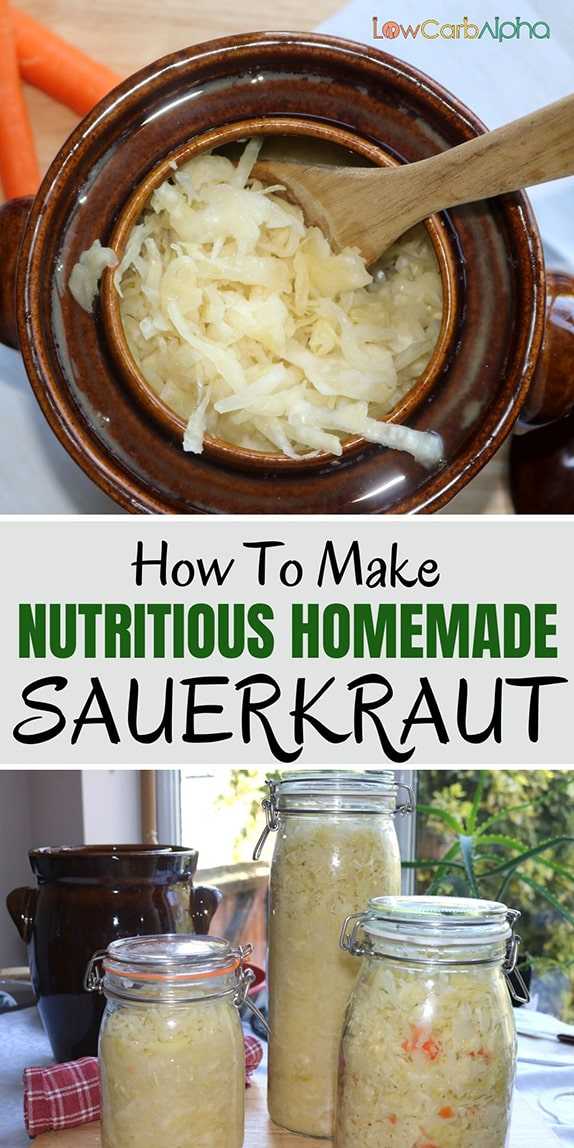
Eating sauerkraut on a regular basis will strengthen your immune system, decrease bloating, and control weight.
It is no use buying sauerkraut from grocery stores since it contains only a small amount of microbes your body desires.
Most store-bought sauerkraut is pasteurized and then canned. It is much better to prepare your kraut at home for healthy amounts of bacteria.
You want to eat freshly made sauerkraut as it contains live bacteria, and so you know you are getting the health benefits.
As it is low in carbs it is great to eat if following a low carb or keto diet.

The bacteria present in the cabbage convert sugars into lactic acid and decrease the overall amount of carbs. Therefore you need not worry about the sugar content in the finished recipe.
Today we show you how to make sauerkraut either in a crockpot or mason jar depending on the amount you require.
Homemade Sauerkraut Preparation
The minimum ingredients you require for this easy homemade recipe is cabbage, unrefined salt, and a jar.
Remove some outside leaves of the cabbage and set it to one side.
Cut the cabbage into quarters and remove the tough inner core out of the pieces.
Slice the cabbage into pieces to be able to put through your food processor with the shredding blade attached.
For the crock that we use for the kraut, it can hold over 3 large cabbages weighing roughly 7.5 pounds.
Cut enough to measure 7.5 pounds of shredded cabbage into a large mixing bowl or two.
Add 5 tablespoons of Himalayan salt to the cabbage in the bowl and leave it to wilt for about 30 minutes.
If you are using a mason jar, then reduce the quantity accordingly.
After the cabbage rests in the salt and softens up a bit, use a wooden cabbage stomper to pound and release all the juices.
By using a sauerkraut stomper, it will squeeze and release further moisture from the cabbage if you didn’t massage thoroughly.
After several minutes of pounding away, transfer to the sauerkraut crock or a mason jar.
Keep adding layers of shredded cabbage, mixed with salt, and press down after each layer.
Add caraway seeds to the recipe for an aromatic and earthy anise flavor if preferred.
Keep a few slices from the head of cabbage for the top layer to help keep the shredded cabbage from rising during fermentation.
If the brine does not cover all the vegetables, then add a small amount of filtered water mixed with salt to ensure everything is submerged.
Set the crock or mason jar away in a kitchen cupboard or cool dark place and let it ferment away.
If you have any leftover cabbage, you can pan fry it with some onions for a yummy side dish.
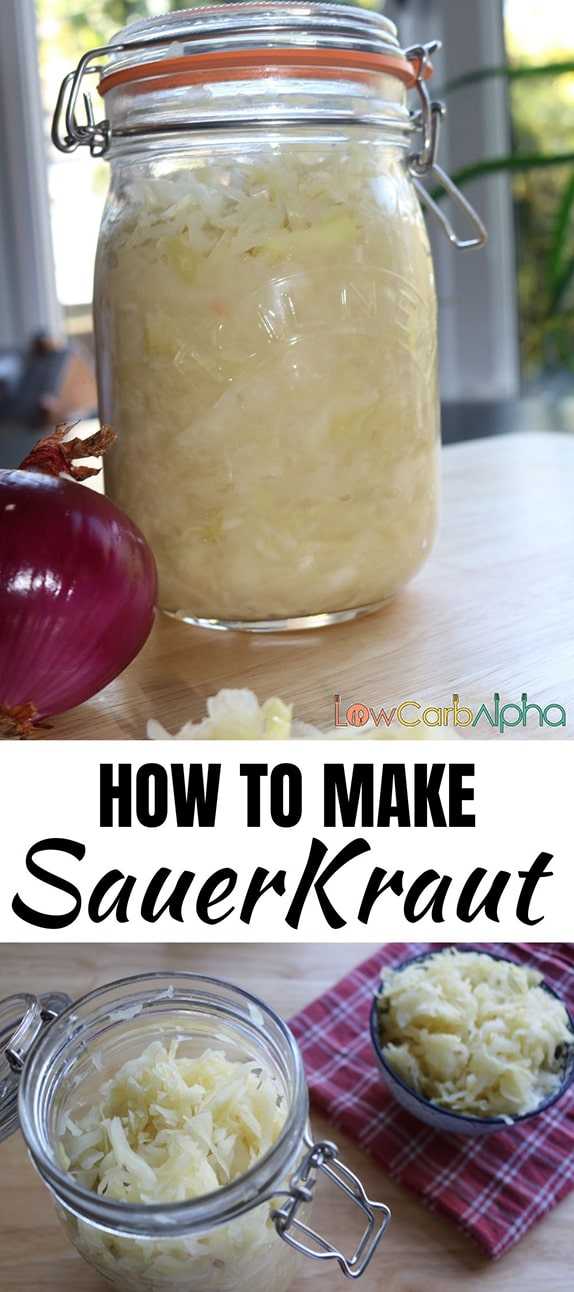
If you prefer to use red cabbage instead of white and add extra ingredients it will work just as well.
Depending on how you like your sauerkraut, let it sit for a minimum of 2 weeks anywhere up to 6 weeks and beyond.
It will bubble on and off throughout the fermentation process.
If you see any scum form on the surface, it is totally fine. Simply remove it with a spoon.
The recipe is complete when bubbles stop rising to the surface.
Sauerkraut is a living food and will continue to ferment, so be sure to keep it at a stable temperature in the fridge.
It will store in the fridge for several months or longer.
After the cabbage has fermented, you will find it is very versatile and can pair with many meals.
Try adding kraut to main meals consisting of meat and veggies or mixed in with a side salad to give it a tangy twist.
No matter how you eat it, it is the perfect low carb or keto-friendly snack or side dish.
The serving size below is based on the amount Per 1 cup (142 g).

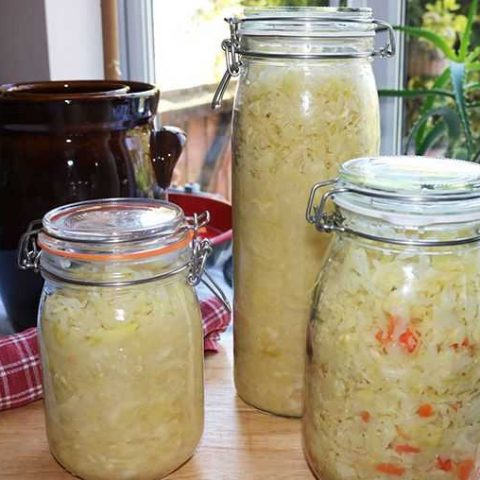
How To Make Sauerkraut
Make healthy and easy homemade sauerkraut either in a crockpot or a mason jar with only 2 ingredients. Increase gut health and wellbeing with freshly fermented cabbage.
Ingredients
- 3 large cabbages
- 5 tablespoons pink Himalayan salt
- 2 tsp caraway seeds, optional
- Fermenting Crock Pot
- Mason jars
- Fido jars
- Pounding tool e.g wooden cabbage stomper, pounder
- Food processor to shred the cabbage
- Wooden Spoon
- Alternatively, Knife and cutting board to cut the cabbage
Instructions
- Remove some outside leaves of the cabbage and set to one side.
- Cut the cabbage into quarters and remove the tough inner core out of the pieces.
- Slice the cabbage into pieces to be able to put through your food processor with the shredding blade attached.
- For the crock that we use for the kraut, it can hold over 3 large cabbages weighing roughly 7.5 pounds.
- Cut enough to measure 7.5 pounds of shredded cabbage into a large mixing bowl or two.
- Add 5 tablespoons of Himalayan salt to the cabbage in the bowl and leave it to wilt for about 30 minutes.
- If you are using a mason jar then reduce the quantity accordingly.
- After the cabbage rests in the salt and softens up a bit, use a wooden cabbage stomper to pound and release all the juices.
- After several minutes of pounding away, transfer to the sauerkraut crock or a mason jar.
- Keep adding layers of shredded cabbage, mixed with salt, and press down after each layer.
- Add caraway seeds to the recipe for an aromatic and earthy anise flavor if preferred.
- Keep a few slices from the head of cabbage for the top layer to help keep the shredded cabbage from rising during fermentation.
- If the brine does not cover all the vegetable then add a small amount of filtered water mixed with salt to ensure everything is submerged.
- Set the crock or mason jar away in a kitchen cupboard or cool dark place and let it ferment away.
- If you have any leftover cabbage, you can pan fry it with some onions for a yummy side dish.
Notes
If you prefer to use red cabbage instead of white and add extra ingredients it will work just as well.
Depending on how you like your sauerkraut let it sit for a minimum of 2 weeks anywhere up to 6 weeks and beyond.
It will bubble on and off throughout the fermentation process.
If you see any scum form on the surface, it is totally fine. Simply remove it with a spoon.
The recipe is complete when bubbles stop rising to the surface.
Sauerkraut is a living food and will continue to ferment so be sure to keep it at a stable temperature in the fridge.
It will store in the fridge for several months or longer.
After the cabbage has fermented, you will find it is very versatile and can pair with many meals.
Try adding kraut to main meals consisting of meat and veggies or mixed in with a side salad to give it a tangy twist.
No matter how you eat it, it is the perfect low carb or keto-friendly snack or side dish.
The serving size below is based on the amount Per 1 cup (142 g).
Nutrition Information:
Yield: 23 Serving Size: 1 ServingAmount Per Serving:Calories: 27Total Fat: 0.2gSaturated Fat: 0gTrans Fat: 0gUnsaturated Fat: 0gCholesterol: 0mgSodium: 2mgCarbohydrates: 6gNet Carbohydrates: 2gFiber: 4.1gSugar: 2.5gProtein: 1.3g
Nutritional information is estimated.
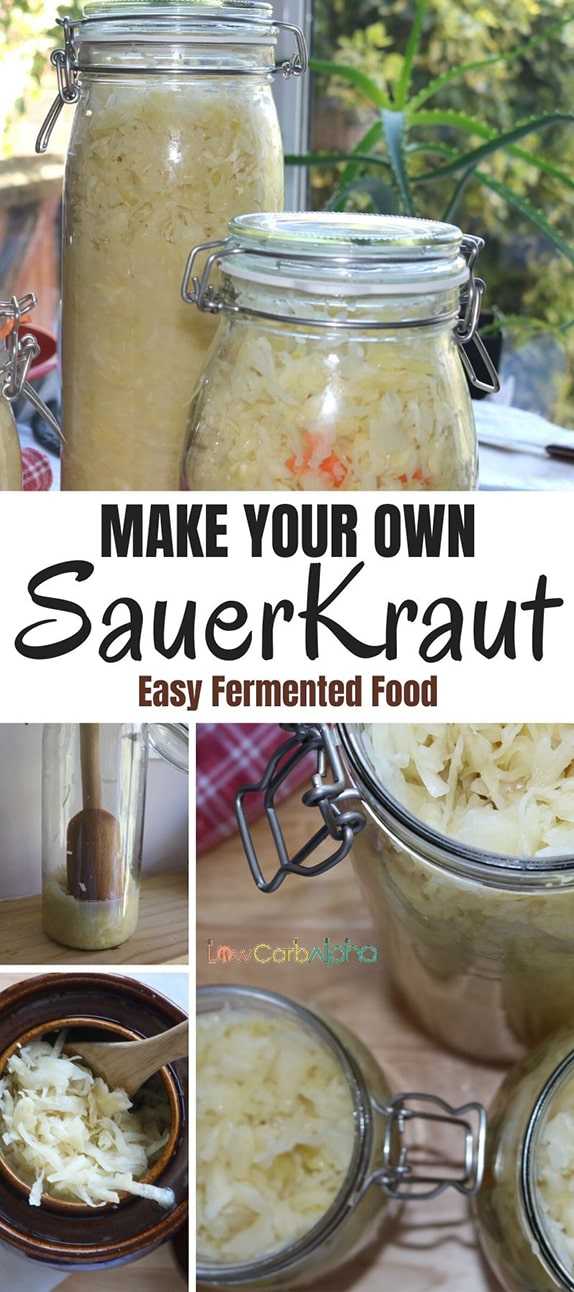
Homemade sauerkraut is basically cabbage and salt. It is perfect for keeping carb intake in check and is keto-friendly.
Start introducing kraut into your daily diet, and you can experience great health benefits.
Let us know how your sauerkraut recipe turned out and how long you choose to ferment your cabbage.
Be sure to check out our other fermented food recipes plus diet and nutrition articles.

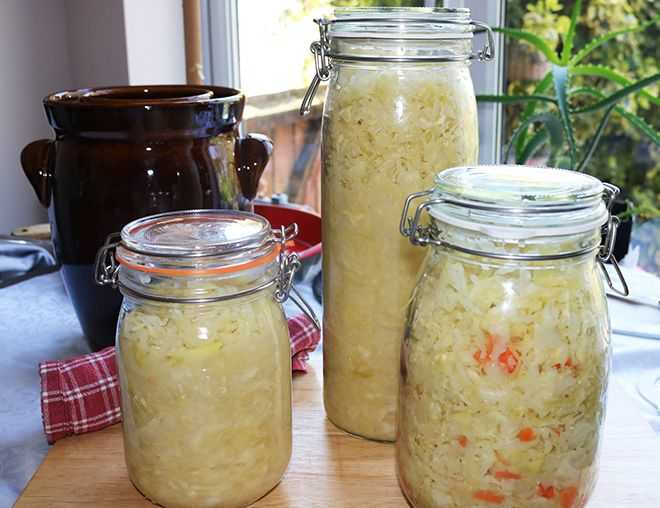

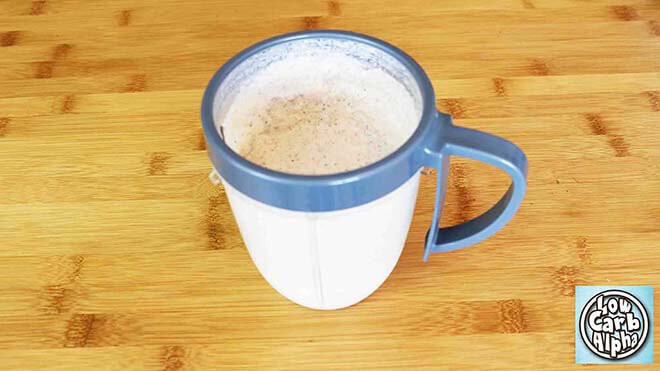
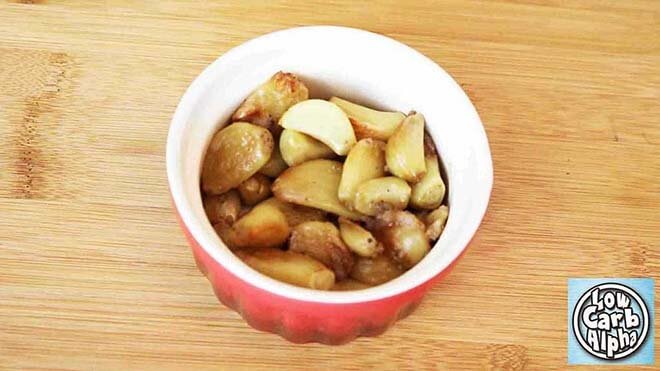
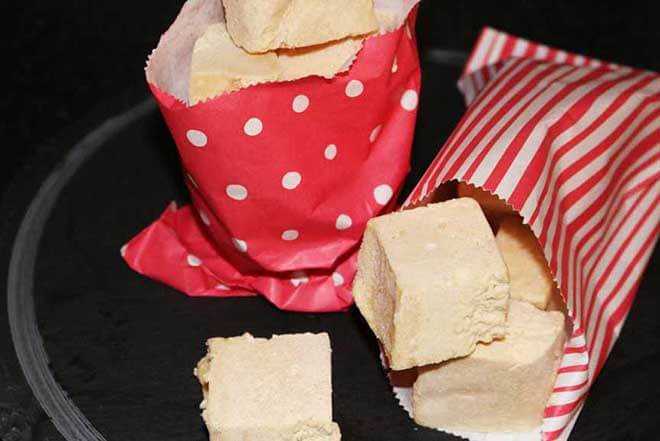

If using a mason jar do you put a lid on it during fermenting? and should it be refrigerated after fermentation has taken place ?
Yes, cover put the lid on but not too tight and open to release any pressure built up every day. There are also mason jars with silicone airlocks to aid fermentation.
Put it in the fridge when finished to stop/slow down the fermentation process.
Could I use cheese cloth instead of the lid, to cover it in the Mason jar?
Yes, that will work fine. The cheesecloth will keep the flies out, but it can let in more white mold or Kahm yeast. You will just need to skim off every few days or so.
Can you can this sauerkraut after fermenting??
Yes I always can and/or store sauerkraut in mason jars and it lasts several months if needed.